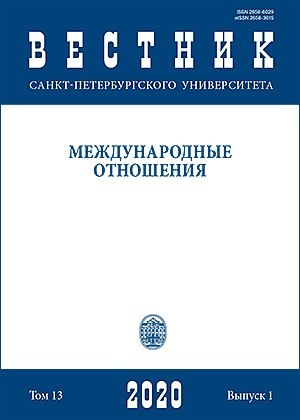The Belt and Road Initiative and international relations theories: Challenges and a new research agenda
DOI:
https://doi.org/10.21638/spbu06.2020.103Аннотация
The majority of existing research on the Belt and Road Initiative (BRI) focuses primarily on its operation in past years. However, efforts to deepen an understanding of the BRI itself remain at an early stage. Some fundamental questions on its nature, scope, process and implications still remain and require clearer answers or even more debates. Scholars who fail to consider these larger questions risk developing their arguments on premature assumptions on the BRI and consequently overlooking very important elements of it. From the discipline of international relations (IR), this article aims to identify some key questions to the BRI and recommend a new research agenda. It argues that IR scholars face challenges to examine the BRI due to the BRI itself, as a puzzle, and limits of current dominant IR trends. This article suggests that a better understanding of the BRI involves a more open-minded conceptualization of it. The new research agenda on the BRI proposes to focus on five themes and related key questions and hypotheses. In order to tackle the complexity of the BRI, this agenda calls for more creative efforts, including a combination of various theoretical perspectives, and incorporation of more elements of non-western wisdom into analytical frameworks, including China and other countries. Being aware of the debates of incommensurability between paradigms and perspectives, this article suggests a pragmatic approach in acquiring knowledge on the BRI.
Ключевые слова:
Belt and Road Initiative, international relations, research agenda
Скачивания
Библиографические ссылки
Загрузки
Опубликован
Как цитировать
Выпуск
Раздел
Лицензия
Статьи журнала «Вестник Санкт-Петербургского университета. Международные отношения» находятся в открытом доступе и распространяются в соответствии с условиями Лицензионного Договора с Санкт-Петербургским государственным университетом, который бесплатно предоставляет авторам неограниченное распространение и самостоятельное архивирование.




